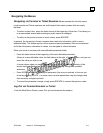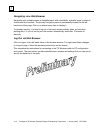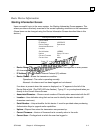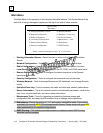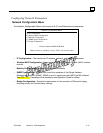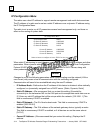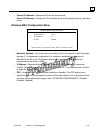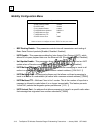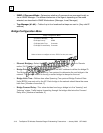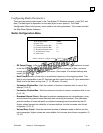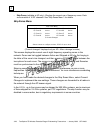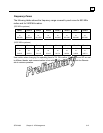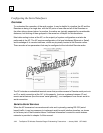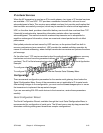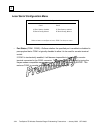
GFK-2489 Chapter 3 AP Management 3-17
3
SNMP Agent Configuration Menu
SNMP Agent Configuration Menu (80000102201a9fe0002)
A) SNMP Read Community --------
B) SNMP Write Community --------
C) SNMP Trap Community --------
D) Snmp v3 Auth Password --------
E) Snmp v3 Priv Password --------
F) SNMP Mode v1-v2-v3 J) Trap Manager #1 0.0.0.0
G) Trap Version v1 traps K) Trap Manager #2 0.0.0.0
H) Auth Trap Enable disabled L) Trap Manager #3 0.0.0.0
F) SNMP v3 Password Mode manager M) Trap Manager #4 0.0.0.0
Select a letter to configure an item, <ESC> for the prev menu
This menu provides configuration and control of SNMP functionality.
▪ SNMP V3 Agent ID—The alphanumeric string that appears in the upper right-hand corner
of the screen. The entry of this string is required in some SNMP manager programs (for
example, SNMPc). Refer to program documentation for details.
▪ SNMP Read community—Community name with SNMP read-level access. Any eight-
character alphanumeric string.
▪ SNMP Write community—Community name with SNMP write-level access. Any eight-
character alphanumeric string.
▪ SNMP Trap community—Community name with SNMP access to receive traps. Any
eight-character alphanumeric string.
▪ Snmp v3 Auth Password—The password used in an MD5 (Message-Digest algorithm 5)
hash along with the message data to create a message digest. The digest is used by the
SNMP entities to validate the source of the packet. The password can be any
alphanumeric string between eight and 30 characters in length.
▪ Snmp v3 Priv Password—The privacy password stored in the transceiver flash memory.
The password is used in DES (Data Encryption Standard) encryption, and can be any
alphanumeric string between eight and 30 characters in length. It is used when the SNMP
Agent is managing passwords locally (or initially for all cases on restart).
▪ SNMP Mode—Set or display current state of the SNMP agent. [Disabled, v1 only, v2 only,
v3 only, v1-v2, v1-v2-v3; v1-v2-v3]
▪ Trap Version—Set the SNMP version for traps. [v1 Traps, v2 Traps, v3 Traps; v1 Traps]
▪ Auth Trap Enable—Current state of the authentication traps. [Disabled/Enabled;
Disabled]



